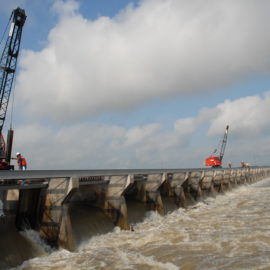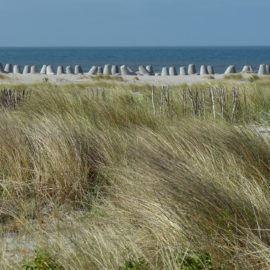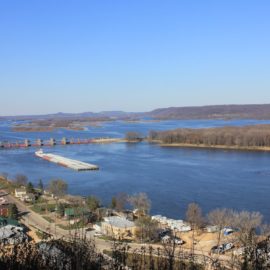
Yes, we will fund MRGO but wait. How long”? Years.
It was an important moment for the state’s coastal restoration officials: Congress agreed late last year to have the federal government foot the bill for the vast amount of land loss caused by the operation of the Mississippi River-Gulf Outlet shipping channel across four decades. But there was a catch. The money estimated at around $3 billion still has to be budgeted in Washington. And an Army Corps of Engineers official now says the earliest that can happen is the fall of 2025. Deauthorized in 2008 because it was rarely used and the cost of dredging outweighed its utility, the channel also was blamed for helping funnel storm surge into the city during Hurricane Katrina. The 72-mile navigation shortcut from the Gulf to New Orleans was closed with a dam in 2009, but widespread environmental damage remains. The Corps’ update at this week’s meeting of the state’s Coastal Protection and Restoration Authority board was aimed at explaining how it will move forward with a restoration plan developed and nearly approved in 2012, until the state objected to paying 35% of its cost. The state argued that legislation closing the channel also required the Corps to pay 100% of restoration costs, setting off a long dispute that included legal challenges.
nola.com
The dispute was resolved and hope sprung up.
That dispute was finally resolved a couple months ago, when Congress included language in a major federal bill known as the Water Resources Development Act requiring the Corps to pay 100% of the restoration costs. But President Joe Biden’s fiscal year 2024 budget was already published before that bill was approved, and it included no money for MRGO projects. What’s also unclear is exactly what the restoration plans will now include. The Corps developed a comprehensive restoration plan and oversaw an environmental impact statement supporting it as part of the closure process. When left on hold in 2012, the plan was to have a three-tier process built over multiple years. The first included about $1.3 billion in wetlands restoration and shoreline protection projects along the MRGO’s path through New Orleans and St. Bernard Parish. Those repairs included restoring or protecting large segments of the Biloxi Marshes around Lake Borgne and along the landbridge connecting eastern New Orleans to St. Tammany Parish. After the state objected to paying 35% of the cost of those projects, it identified other funding sources to do many similar projects, some of which are still under construction or planned over the next few years. Money for those projects came from the federal Coastal Wetlands Planning, Protection and Restoration Act, and from various buckets of money made available to the state or federal agencies from BP and its drilling partners as fines or damage payments for the Deepwater Horizon oil spill.

(Coastal Protection and Restoration Authority)
The following tiers were wetlands restoration and other coastal restoration projects.
The second and third tiers of the original restoration plan included additional wetlands restoration and shoreline stabilization projects that were still under review. They also include a proposal to build a diversion to funnel freshwater into what is known as the Central Wetlands Unit, a former cypress and tupelo swamp between levees in the Lower 9th Ward of New Orleans and St. Bernard Parish that was inundated with saltwater from the MRGO. That diversion is included in the state’s 2023 coastal Master Plan, slated for construction sometime after 2043. Darrell Broussard, the Corps senior project manager for the MRGO restoration program, said at Wednesday’s meeting that the Corps is still awaiting formal guidance on how to interpret the water resources bill’s provisions from senior Corps officials. The state must also sign an agreement that will identify it as the project’s local sponsor. Only then would the Corps request funding from Congress as part of the fiscal year 2025 budget and other future budgets — and there are no guarantees that those requests will be granted.
The CPRA responded quickly.
When told that the agency couldn’t move forward until the state signed an agreement with the Corps agreeing to be the “local sponsor” for the project, CPRA Chairman Chip Kline responded immediately: “I’d like the letter sent on this this afternoon, so you can cross off task one on your list.” Meanwhile, the Corps will not reimburse the state or other federal or local agencies for the projects already underway, said Broussard. Kline said however that the costs of those projects could potentially be considered as offsets for state-required payments for other restoration or hurricane and flood protection projects. Broussard also updated the coastal authority on the status of plans to spend $1.3 billion to elevate homes and floodproof businesses in Cameron, Calcasieu and Vermilion parishes, and another $5.5 billion on a variety of restoration projects in those parishes. The combined projects were approved by Congress in 2016, but damage to many homes and businesses there from Hurricanes Laura and Delta in 2020 has raised questions about whether some of the 4,000 structures included in the original proposal were destroyed or abandoned.

(Army Corps of Engineers)
There should be enough money for over a thousand homes.
Broussard said the Corps has federal funds and a promise of state funds totaling about $296 million for the building risk reduction program, which should be enough to pay for between 800 and 1,000 structures. Another $10 million in federal and state money should be available for ecosystem restoration projects. The state must pay 35% of the costs for both types of projects. Broussard said the Corps anticipates signing an agreement with the state in May, which would allow construction to begin. The elevation and floodproofing program is voluntary, and public meetings will be held later this year to explain the conditions for participation. The targeted homes and businesses are located in areas that have a 4% chance of flooding in any year, a so-called 25-year flood. Kline said the state already has set aside part of the money for its share of at least the first year of the home elevation program. But he and other authority members said the state must identify funds to pay for future years of the risk reduction program, which could take up to five years to complete. The first $10 million of restoration funds will be used to design and build 6 miles of shoreline protection at the Rockefeller Refuge, and for other parts of the restoration plan, as needed.



